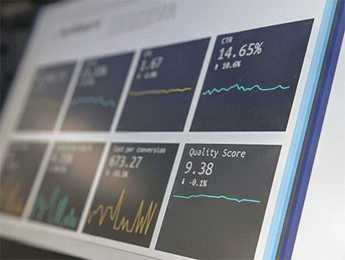
We've all come across a website that was poorly designed or we couldn't find what we were looking for, causing us to leave that site immediately. This action, which we have done thousands of times, contributes to the bounce rate of a website.
A high bounce rate means that there is a low chance that your website visitors will be converted into leads and customers. There are a variety of ways to change bounce rates to increase recurring traffic to your website and increase conversion rates.
What exactly is bounce rate and why is it important?
Bounce rate is the percentage of sessions in which users open a page and leave without taking any further action. While a bounce rate is expected for websites with a single page like a blog, a high bounce rate is a big problem for websites that rely on users learning more about products and services or checking out their shopping carts.
A high bounce rate can be symptomatic of larger problems with your website, including:
- Links that don't work
- Weak call-to-actions
- Difficulty navigating the website
Here are five ways to lower bounce rates on your website:
1. Use analytics tools to measure bounce rates.
Without a comprehensive analytics tool, you won't know if you have many web pages with high bounce rates on your website and which ones they are. Among the most popular analytics platforms are HubSpot and Google Analytics, which allow you to measure key performance indicators of individual pages, including their bounce rates.
For Google Analytics, there are four different reports: audience summary, channels, total views, and all pages. With Google Analytics, you can investigate the causes of high bounce rates from different perspectives.
For example, if your overall bounce rate for your website is high in the Audience Overview report, the problem may be with your overall website design. If the bounce rate changes drastically for different pages in the All Pages report, it may be the content of each page, such as page titles or CTA's.
2. improving navigation
One of the main reasons why visitors might leave your website without visiting another page is that your website was difficult to navigate. To solve this, check the navigation on your website by looking at your sitemap and the arrangement and structure of its content. Tools like Google Analytics also provide a visual representation of the content flow, how your visitors get from one page to another.
If you find that your visitors aren't moving to the pages you want them to visit, change the hierarchy and organization of the site. You can add subsections that more clearly define the content, or divide individual links into categories.
You can also improve your navigation by adding more visual elements that draw visitors' attention to the links or pages they want. Add buttons and contrast text to your improved navigation design to help users find the content they want faster.
3. increase loading speed
Loading speed is another issue that could increase bounce rates. If the first page users click on loads slowly, users will have the expectation that the rest of your site is slow and leave without clicking on another link.
An analytics tool shows them the number of seconds it takes for pages to load. You can access this report through Google Analytics by going to Reports -> Behavior -> Load Speed. If you find that your pages are loading too slowly, you can fix the cause of your page load times speeding up. Fixes for slow loading pages can include compressing images and reducing page redirects.
4. optimization of linking between pages.
When visitors find interesting content, they naturally want to read on. For this reason, linking optimization (also called internal linking) should be an important part of your strategy to reduce bounce rates. Problems with linking that could contribute to higher bounce rates include:
- Links are hidden or difficult to see. Depending on the design of your website, it may be difficult for visitors to see links. The anchor text of the pages you link to should be clearly defined, such as a high-contrast color or an underline that appears below the anchor text when you hover over it.
- Broken links. If you have links that take readers to a 404 page that can't be found, it can impact your bounce rates. Use an analytics tool to find and fix broken links. The linked pages themselves should be related to the page your visitors are on.
5. Change content to make it more descriptive (calls to action, page titles, etc.).
Finally, the bounce rate problem may be the result of the page content itself. For example, landing pages need a strong call to action so that users know the next step, usually by clicking to the next page that will bring them closer to becoming a lead or buying a product or service.
In this case, you need to revise your content so that the next step in the marketing or sales funnel is transparent. If you want them to download a whitepaper or other content marketing piece as the next step, you'll attract attention.

.jpg?width=340&height=200&name=Image%20(9).jpg)
.jpg?width=340&height=200&name=Image%20(66).jpg)